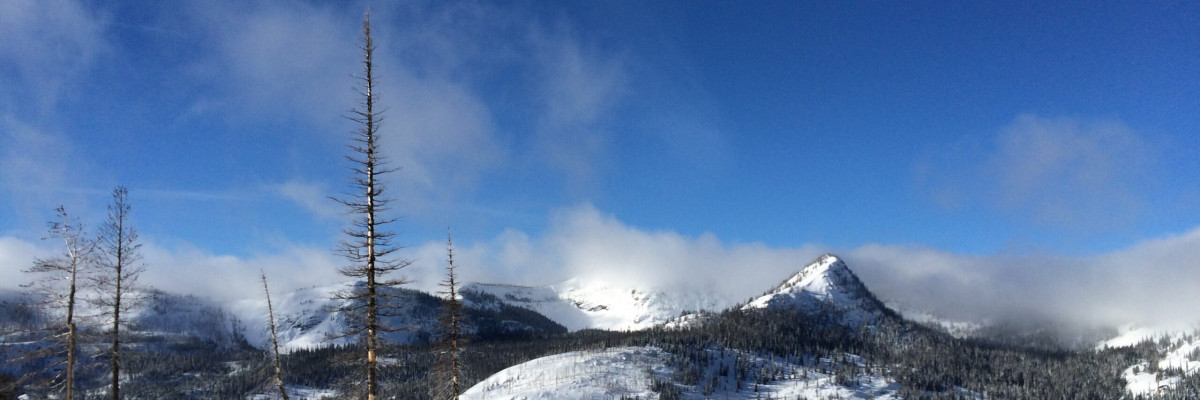Good morning, this is Logan King at the West Central Montana Avalanche Center with an early season avalanche information update issued Thursday, December 10, 2015.
A series of storms moved through the region depositing a significant load earlier in the week. Many locations in west central Montana saw nearly 2 inches of snow water equivalent as snow levels climbed to around 7500 feet. High snow levels resulted in a combination of snow and rain that was seen throughout the region adding a significant load to the snowpack.
Wednesday morning more precipitation was added to the snowpack as snow levels remained fairly high. This event deposited much less snow water but significant winds were observed as the cold front pushed through in the afternoon. Ridge top winds were observed in the 40-50 mph range and gusting over 70 mph out of the west on Point Six.
Widespread storm slabs and more localized windslabs will be sitting on top of a weak snowpack that developed during the extended cold period that occurred around Thanksgiving. A good heavy slab sitting on a weak snowpack is going to warrant close attention.
Temperatures are expected to drop going into the weekend and more snow is in the forecast as well. If you choose to travel in the backcountry use safe travel protocols and be diligent with your assessments. Dependent on conditions, regular avalanche advisories will be posted starting later in December. As always let us know if you get out in the snow and share your observations on the public observations page. Think Snow.














